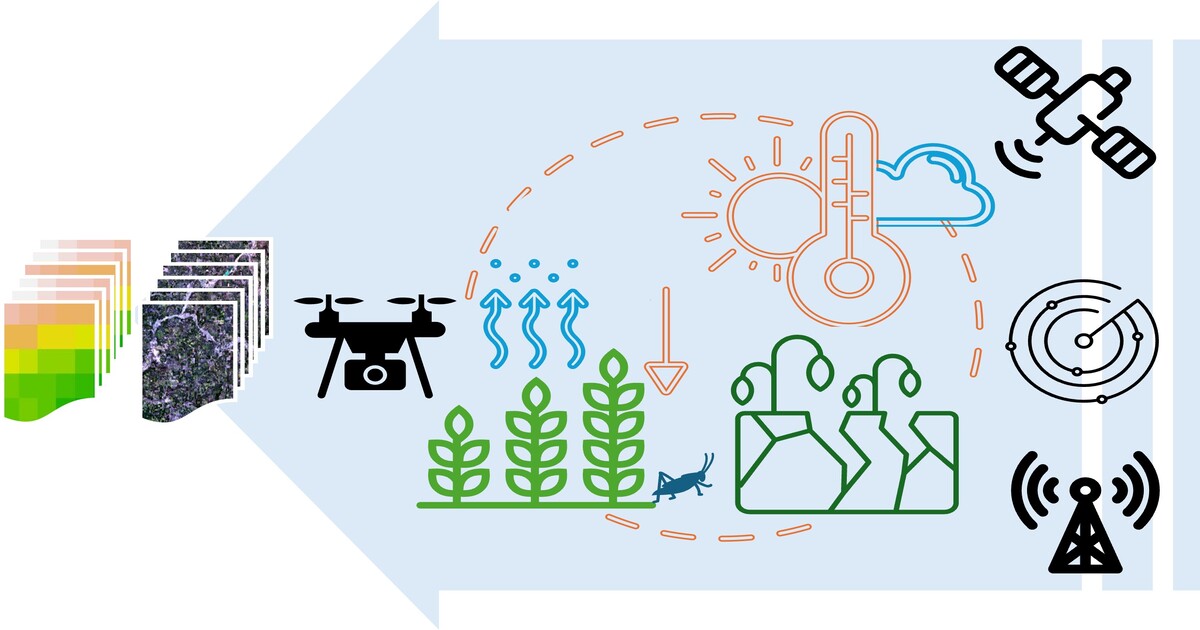Advances in the Remote Sensing of Crop Phenology and Production Monitoring Under Environmental Constraints
A special issue of Remote Sensing (ISSN 2072-4292). This special issue belongs to the section "Remote Sensing in Agriculture and Vegetation".
Deadline for manuscript submissions: 31 March 2026 | Viewed by 703

Special Issue Editors
Interests: crop phenology; crop calendar; remote sensing
Interests: agricultural land use; remote sensing application; vegetation phenology and modelling
Special Issue Information
Dear Colleagues,
The spatially explicit and accurate monitoring of crop phenology and production is essential for enhancing our understanding of agricultural practices and their associated ecological services. Significant efforts have been made to improve monitoring accuracy, though these efforts are inevitably complicated by environmental constraints, including extreme temperatures, drought, nutrient deficiencies, and diseases. Remote sensing provides spatiotemporal details of crop dynamics within a consistent framework. In particular, multi-source remote sensing data from satellites, unmanned aerial vehicles (UAVs), and ground-based sensors offer valuable opportunities to monitor crop phenology and production across various spatial and temporal scales. Still, several challenges remain unresolved. How can we develop effective methods to further improve the accuracy of crop phenology and production monitoring? How can we recognize anomalies caused by environmental constraints and subsequently explore their effects on crop phenology and production monitoring?
We are pleased to invite you to contribute to this Special Issue related to phenology and production monitoring using remote sensing methods across different spatial scales and various crops, as well as under environmental constraints.
In this Special Issue, original research articles and reviews are welcome. Research areas may include (but are not limited to) the following:
- Detecting and monitoring crop phenology;
- Estimating crop yield and production;
- Developing algorithms for improving the accuracy of crop phenology and production monitoring;
- Analyzing environmental constraints on crop phenology and production monitoring;
- Applying machine learning and deep learning for crop phenology, production, and environmental constraints analysis.
We look forward to receiving your contributions.
Dr. Xin Zhao
Dr. Jianxiu Shen
Dr. Sanai Li
Guest Editors
Manuscript Submission Information
Manuscripts should be submitted online at www.mdpi.com by registering and logging in to this website. Once you are registered, click here to go to the submission form. Manuscripts can be submitted until the deadline. All submissions that pass pre-check are peer-reviewed. Accepted papers will be published continuously in the journal (as soon as accepted) and will be listed together on the special issue website. Research articles, review articles as well as short communications are invited. For planned papers, a title and short abstract (about 250 words) can be sent to the Editorial Office for assessment.
Submitted manuscripts should not have been published previously, nor be under consideration for publication elsewhere (except conference proceedings papers). All manuscripts are thoroughly refereed through a single-blind peer-review process. A guide for authors and other relevant information for submission of manuscripts is available on the Instructions for Authors page. Remote Sensing is an international peer-reviewed open access semimonthly journal published by MDPI.
Please visit the Instructions for Authors page before submitting a manuscript. The Article Processing Charge (APC) for publication in this open access journal is 2700 CHF (Swiss Francs). Submitted papers should be well formatted and use good English. Authors may use MDPI's English editing service prior to publication or during author revisions.
Keywords
- crop phenology
- crop production
- environmental constraints
- agricultural remote sensing
- algorithm development
- time series analysis
- precision agriculture
- yield prediction
- crop monitoring
Benefits of Publishing in a Special Issue
- Ease of navigation: Grouping papers by topic helps scholars navigate broad scope journals more efficiently.
- Greater discoverability: Special Issues support the reach and impact of scientific research. Articles in Special Issues are more discoverable and cited more frequently.
- Expansion of research network: Special Issues facilitate connections among authors, fostering scientific collaborations.
- External promotion: Articles in Special Issues are often promoted through the journal's social media, increasing their visibility.
- Reprint: MDPI Books provides the opportunity to republish successful Special Issues in book format, both online and in print.
Further information on MDPI's Special Issue policies can be found here.







